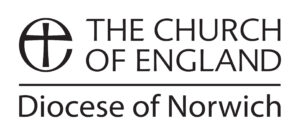Dear sisters and brothers in Christ.
Following the sad news from Buckingham Palace about the death of HRH The Duke of Edinburgh it was a privilege to say evening prayer at St Mary Magdalene’s, Sandringham during which we prayed for Her Majesty The Queen and the Royal Family in their loss, as well as for the soul of HRH The Duke of Edinburgh. The Duke loved this county and it was good that he could spend so much time living here quietly in recent years.
Please find below the Church of England’s guidance for parish churches at this time which I commend to you. Further information will follow as it is received. I will be writing to The Queen tomorrow to assure her of the prayers of us all in the Diocese of Norwich.
With every blessing and my prayers this Eastertide.
+Graham Norvic:
Purpose of this document
- This guidance provides some general advice on what parishes may wish to do following the announcement of the death of His Royal Highness, Prince Philip, The Duke of Edinburgh. Dioceses and local authorities will have their own plans and guidance, and this document is intended to support those plans at parish level. It gives a framework from which parish churches can decide on the best course of action in their own contexts, and should therefore not be seen as prescriptive.
Planning a local response in conjunction with national plans
- A significant amount of national planning has taken place in relation to the death of senior members of the Royal Family. It is expected that the death of Prince Philip will be a time of significant national mourning and parish churches will play a key role in the life of the nation at that time. The material below suggests some ways that local plans can be arranged in line with the national timeline.
- During the present coronavirus pandemic, risk assessments will need to be undertaken to see what impact the pandemic may have on any of these potential arrangements, as mass gatherings and unnecessary travelling should not be taking place at this time. Issues around pandemic planning are in red in this document.
- By the time you receive this document, news of the death will be well known, and the national structures will be communicating details of the official commemorative events and the Ceremonial Royal Funeral. The death of Prince Philip will be announced formally from Buckingham Palace and by the Government. For the purposes of this document, this day will be designated as D-Day with all subsequent days numbered after this day. The days between D-Day and the funeral are likely to be designated as days of mourning. The table below suggests the likely sequence of events. The funeral will not take place on a Sunday or a Bank Holiday, so the timings in the box below may have to be amended to reflect this.
D-Day
- Formal announcement of the death of Prince Philip.
- Bells to be tolled as soon as possible after the announcement. Coronavirus restrictions apply and tolling can be undertaken by one person, with risk management measures in place for lone working.
- Flags to be flown at half-mast and to remain at this height until the day after the funeral. See guidance: British Flag Institute – see especially Flying flags in the United Kingdom and Flags for Churches
- An informal time of prayer, or a more formal service, could take place in the local church as soon as it is practical to do so, either today or on a subsequent day. Coronavirus restrictions apply – consideration of online services to be offered. See further information on resources, below.
- Areas for floral tributes (local outdoor locations) to be identified and communicated. Co-ordination with local authorities on this, messaging to reinforce that gatherings of more than six people (unless they are from the same household, or from two linked households) should not take place and that there should be the appropriate physical distancing.
D+1
Books of condolence are only to be made available online and to be open until the day after the funeral. Online national books of condolence will be made available – see the further information in sections 12-15 below. Coronavirus restrictions apply – the Government has said that physical books of condolence should not be put in place.
Sunday during the period of mourning
- Services taking place should be reviewed. Special material will be available to add to existing forms of service (see below), and official Commemorative Services are also commended for use on this day.
Day before the funeral (D+7 (although this may be sooner) or later if D+8 is a Sunday or Bank Holiday)
- 6pm (suggested) – Potential local church service. A model order of service and additional resources will be available to plan this service. Coronavirus restrictions apply – risk assessments, physical distancing and restrictions on attendance will be in place. Consider online offerings of services.
D+8 (although this may be sooner) (or later if D+8 is a Sunday or Bank Holiday)
- Bells could be tolled for the hour immediately prior to the time of the funeral service. Coronavirus restrictions apply – and tolling can be undertaken by one person, with risk management measures in place for lone working. See guidance : Bells – Central Council of Church Bell Ringers – see especially Guidance Note: Operation London Bridge
- Funeral takes place.
- Messages from churches to encourage crowds not to gather at this time due to coronavirus restrictions.
- 11.50am (approx) – National two minutes’ silence at end of funeral service Possible coronavirus restrictions may apply. People may be encouraged to observe this on their doorsteps, in the present circumstances.
Day after the funeral
- Flags to be returned to full mast.
- Floral displays to be ended (possible local ceremony to mark this).
- Online books of condolence to be closed at the end of the day.
Prayer and worship
- Resources for private prayer and public worship will be made available through the Church of England website and also via your archdeacon. These include prayers which could be said in homes and families, and as fully worked-out orders of service which can be customized, as well as resources (proper texts, intercessions) which might be added to services during the period of mourning:
- simple prayers for use on hearing of the death;
- a service of prayer for use in families or in church;
- prayers for use at home, or to share in church;
- Eucharistic and non-Eucharistic orders of service for use in the parish between the death and the funeral, including on the Sunday or Sundays during the period of mourning;
- official Commemorative Services, appropriate for a parish or civic context, which could be held in place of, or additional to, regularly scheduled worship.
Resources will also be available for schools to use both on the Church of England website and also from their local Diocesan Education teams which provide opportunities for pastoral engagement.
- The official Commemorative Services mentioned above will be published online by the Printer to the Crown, Cambridge University Press, and shared by the Church of England. Additional materials will also be shared on official Church of England social media channels and at www.churchofengland.org
- Official prayers will be on the Church of England website and also shared across social media on the Church of England’s Facebook, Twitter (@churchofengland) and Instagram (@thechurchofengland) accounts, which can be shared by local churches on their own social media accounts or used in printed material.
- A nationally produced service will be streamed on the Church of England’s Facebook and YouTube channels as well as being on the Church of England website. This can be shared on social media by your church to complement your local services, or used if you are unable to share local services at the time.
- Churches should check the schedule of national, diocesan and regional events in planning their own. Coronavirus restrictions are in place and must be included in all planning.
Areas of mourning and floral displays
- It is likely that members of the public may wish to express their grief through the placing of bouquets, flowers, cards or other items. Consideration should be given to a site which could be used for this purpose, and the need to clear it away on the day following the funeral (it is suggested that there could a formal marking of the removal of the flowers at 9am). Local councils should be consulted about an appropriate site and for disposal purposes. Coronavirus restrictions apply and communications / notices should emphasise physical distancing.
- It will be important to consider how many people may look to churches to be a location of mourning, and to address how they will gather and possibly queue in and around the church. Consideration might be given to providing areas where people could light candles, (with appropriate fire risk controls in place especially consider whether this should be provided if alcohol based hand sanitiser is being used). A suitable framed photograph on the table, with a black cloth under it may be appropriate. An authorised photograph will be made available on the Resource Hub on AChurchNearYou.com. The pastoral needs of those who are gathered to mourn will also need to be considered. Coronavirus restrictions apply and the risk assessment should be reviewed.
Books of condolence
- The government guidance is that books of condolence should be online only and should be opened on the first working day after the day of death (D+1). Local discussions will need to be held with the appropriate local council to decide upon the appropriate way to put these in place as they may have local online arrangements in place, or whether to point people to the nationally available versions. Coronavirus restrictions apply and further guidance may be given by the government on this.
- National online books of condolence are being made available as a safe way for the public to leave messages of condolence. You will be able to find these on the Church of England’s website: www.churchofengland.org and www.royal.uk
- It is suggested that the online books of condolence should be closed at the end of the day following the day of the funeral. Books of condolence are essentially a local record of the sentiments expressed by local people on the death of a national figure. As such, they should form part of the church’s or local authority’s archive, so that future generations are able easily to gain access to them and find out the way in which national events were marked in the area.
- Those who are responsible for an online book of condolence may wish to send a letter to the Royal Household, detailing where it can be accessed. Such letters may be sent to the Private Secretary to the Queen (Buckingham Palace, London, SW1A 1AA), asking that condolences be passed to the monarch.
Further information
- For further information or clarification please contact your diocesan communications team, your Rural/Area Dean or your Archdeacon.
Revd. Cameron Watt Dr Matthew Salisbury
Archdeacons National Development Officer National Liturgy & Worship Adviser
cameron.watt@churchofengland.org | matthew.salisbury@churchofengland.org
Friday 9 April 2021
Keep a check on this website and the Norwich Cathedral website for further updates.


